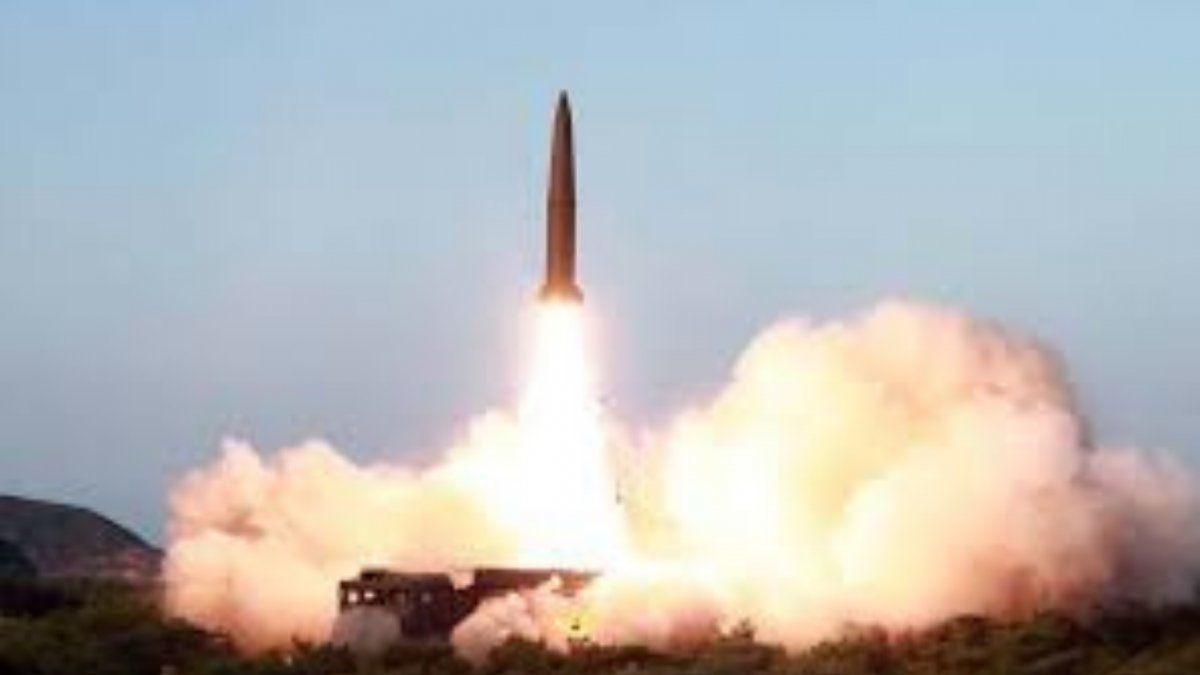South Korean President, Yoon Suk-yeoldenounced the firing of the missile in the direction of his country as “a de facto territorial invasion”and South Korean forces later launched 10 missiles towards the same sea border area.
The releases came hours after North Korea threatened to use its nuclear weapons in protest at large joint military exercises by the United States and South Korea that for years it has seen as a test to invade it.
The United States maintained that it has no hostile intentions toward North Korea and he promised again to work with his allies to contain the nuclear ambitions of the communist country.
North Korea is still technically at war with South Korea and with the United States since the Korean War (1950-1953) ended with an armistice and not with a peace treaty.
The United States has some 28,000 troops in South Korea since the end of the conflict, and North Korea says it has developed and tested nuclear weapons since the 2000s to deter a joint US-South Korean attack.
North Korea it also fired a hundred artillery rounds at the maritime border area, prompting South Korea to launch a rare air raid alert on Ulleungdo Island and ask its inhabitants to take refuge in underground bunkers.
The South Korean military said one of the projectiles launched by North Korea crossed the northern boundary line, the disputed maritime border between the two countries, and landed near the southern territorial waters.
In a statement, President Yoon assured that this “constitutes a de facto territorial invasion with a missile that crossed the northern limit line for the first time since the division” of the peninsula in 1953, the AFP news agency reported.
The military said the closest missile fell into the sea just 57 kilometers east of the South Korean mainland, describing the launch as “highly unusual and intolerable.”
In response to these actions, the South Korean military fired three air-to-ground missiles near the point where the North Korean projectile landed.
These missiles landed “near the northern boundary line at a distance corresponding to the area where the Northern missile struck,” the Army said in a statement.
The South Korean president called a meeting of his National Security Council to discuss the shooting and ordered a “quick and severe response” to these “provocations.”
The country’s authorities also canceled air routes over the Sea of Japan, to the east of the peninsula, and recommended that local airlines divert to “guarantee passenger safety on routes to the United States and Japan.”
These shots come amid the largest joint maneuvers ever carried out by South Korea and the United States, baptized “Storm Watcher”, involving hundreds of warplanes from both sides.
Pak Jong Chona senior North Korean official, said these exercises were aggressive and provocative, North Korean state media reported today.
Pak said the exercise’s name is reminiscent of Operation Desert Storm, the 1990-1991 US offensive in Iraq in response to the invasion of Kuwait.
“If the United States and South Korea intend to use armed forces against the Democratic People’s Republic of Korea without fear, the special means of the DPRK armed forces will deploy their strategic mission without delay,” he said.
“The United States and South Korea will face a terrible situation and will pay the most horrible price in history,” he added.
According to analyst Cheong Seong-chang of the Sejong Institute, these shootings are the “most aggressive and threatening armed demonstration against the South since 2010.”
In March of that year, a North Korean submarine torpedoed a South Korean ship, killing 46 crew members, 16 of whom were doing their mandatory military service.
In November of that same year, North Korea bombed a South Korean border island, killing two young sailors.
The isolated communist country has carried out a record series of weapons tests this year and, according to Seoul and Washington, is preparing a new nuclear test, which would be the first since 2017.
For their part, the United States and South Korea intensified their military maneuvers in the area, to which Japan sometimes joins. The current air exercises were preceded by 12 days of amphibious naval exercises.
Source: Ambito
David William is a talented author who has made a name for himself in the world of writing. He is a professional author who writes on a wide range of topics, from general interest to opinion news. David is currently working as a writer at 24 hours worlds where he brings his unique perspective and in-depth research to his articles, making them both informative and engaging.




